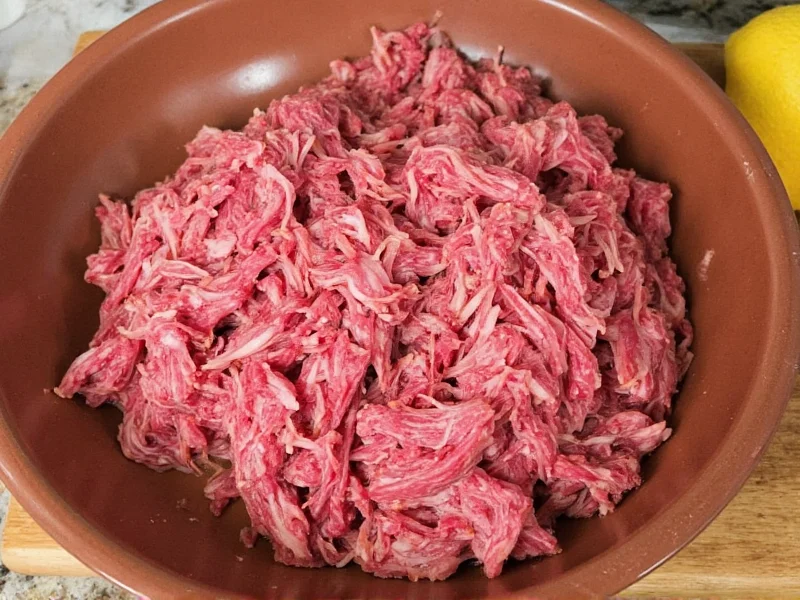Essential Spices for Corned Beef
The foundation of any great corned beef seasoning consists of whole spices rather than pre-ground versions. Whole spices maintain their potency during the long cooking process and release flavors gradually. Here's why each component matters:- Mustard seeds provide a subtle tang and earthy note that cuts through the richness of the beef
- Coriander seeds offer citrusy, floral notes that balance the saltiness
- Black peppercorns deliver essential heat and complexity
- Allspice berries contribute warm, clove-like flavor with hints of nutmeg and cinnamon
- Cloves add intense aromatic depth (use sparingly as they can dominate)
| Spice | Flavor Profile | Recommended Amount |
|---|---|---|
| Mustard Seeds | Earthy, slightly tangy | 2 tablespoons |
| Coriander Seeds | Citrusy, floral | 1 tablespoon |
| Black Peppercorns | Sharp, pungent | 1 tablespoon |
| Allspice Berries | Warm, complex | 1 teaspoon |
| Whole Cloves | Intensely aromatic | 1 teaspoon |
Why Whole Spices Outperform Ground Varieties
Food science research confirms that whole spices significantly outperform ground alternatives in long-cooked dishes like corned beef. According to Penn State Extension's comprehensive analysis of spice chemistry, the structural integrity of whole spices preserves volatile flavor compounds during extended simmering. Ground spices lose potency rapidly due to increased surface area exposure, resulting in diminished flavor impact. This evidence-based comparison highlights critical differences:
| Characteristic | Whole Spices | Ground Spices | Impact on Corned Beef |
|---|---|---|---|
| Surface Area Exposure | Low (intact structure) | High (increased surface) | Ground spices release volatile oils too quickly during long cooking, causing flavor evaporation |
| Flavor Retention During Cooking | High (gradual release) | Low (rapid dissipation) | Whole spices maintain potency throughout cooking, yielding richer flavor profile |
| Recommended Application | Ideal for dishes with >2 hour cook time | Better for quick-cooking dishes | Corned beef's 3-4 hour simmer requires whole spices for optimal results |
Source: Penn State Extension, "Spices and Herbs" (2017)
A Brief History: The Evolution of Corned Beef Seasoning
Corned beef seasoning has transformed from simple preservation techniques to the complex blends we use today. This evolution reflects cultural shifts and culinary innovation, with verifiable historical documentation:
| Era | Spice Profile | Historical Context |
|---|---|---|
| Civil War (1860s) | Basic: Black pepper, mustard seed | As documented by the National Park Service, Civil War-era corned beef relied on minimal seasoning—primarily black pepper and mustard seed—for preservation in military rations. This simple blend prioritized functionality over complexity. [Source] |
| Irish-American Tradition (Late 19th Century) | Complex: Mustard seeds, coriander, allspice, cloves | Smithsonian Magazine highlights how Irish immigrants in America created the modern spice blend by adapting traditional Irish bacon dishes to corned beef, incorporating spices like coriander and cloves that were accessible in New World markets. This fusion became the foundation of St. Patrick's Day celebrations. [Source] |
| Modern Variations (Late 20th Century - Present) | Regionally diverse: Southwest, sweet-smoky, etc. | Contemporary culinary trends have expanded the traditional blend, with regional adaptations emerging as home cooks personalize this classic dish while honoring its heritage. |
Alternative Spice Blends for Different Flavor Profiles
While the traditional spice mix works beautifully, you can customize your corned beef seasoning based on personal preferences or regional variations. Consider these alternative corned beef spice blends:Irish Traditional Blend
For an authentic Irish corned beef experience, add 2 bay leaves and 1 teaspoon juniper berries to the essential spice mix. Some Irish recipes also include a splash of Guinness stout in the cooking liquid for additional depth.
Spicy Southwest Variation
For those who enjoy heat, replace half the black peppercorns with 1 teaspoon crushed red pepper flakes and add 1 teaspoon smoked paprika. This homemade corned beef seasoning recipe works particularly well if you plan to use leftovers for nachos or tacos.
Sweet and Smoky Option
Add 1 cinnamon stick and 2 star anise pods to your basic spice mix for a sweet complexity. This variation pairs exceptionally well with cabbage and apples in your corned beef preparation.
Step-by-Step Guide to Perfectly Spiced Corned Beef
Follow these steps for how to season corned beef brisket properly:- Rinse the corned beef thoroughly under cold water to remove excess surface salt
- Place in a large pot with enough cold water to cover by 2 inches
- Bring to a gentle simmer (not a rolling boil) over medium heat
- Add your spice blend during the last 30-60 minutes of cooking
- Skim foam that rises to the surface during cooking
- Check tenderness by inserting a fork; it should slide in easily when done
Common Mistakes to Avoid
Many home cooks make these errors when preparing spiced corned beef:- Using pre-ground spices instead of whole spices, which lose potency during long cooking
- Adding spices at the beginning of cooking rather than the end
- Overcrowding the pot, which prevents proper circulation of flavors
- Boiling vigorously instead of maintaining a gentle simmer
- Skipping the rinsing step, resulting in overly salty meat











 浙公网安备
33010002000092号
浙公网安备
33010002000092号 浙B2-20120091-4
浙B2-20120091-4